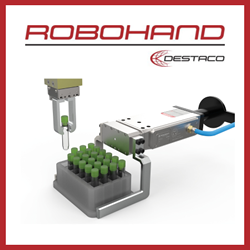RE2 Robotics Partners with University of Texas Arlington to Develop Robotic Nursing Assistant
RE2s robotic manipulator arms will serve as the brawn for the robotic nursing assistant to aid patients and reduce on-the-job injuries suffered by nurses during lifting and maneuvering patients.
PITTSBURGH, PA - October 5, 2015 - RE2, Inc., a leading developer of robotic manipulator arms, announced today that the Company is collaborating with the University of Texas Arlington to design an Adaptive Robotic Nurse Assistant for the National Science Foundation (NSF).
With nearly 3 million registered nurses employed in the United States, RNs make up the largest pool of healthcare providers in the country. The goal of this robotic nursing assistant project is to provide RNs with assistive robots to support their activities within a hospital setting.
The University of Texas Arlington Associate Professor, Dan Popa, is leading the National Science Foundation Partnerships for Innovation: Building Innovation Capacity grant titled "Adaptive Robotic Nursing Assistants for Physical Tasks in Hospital Environments."
"We envision our robotic nursing assistant will perform the more routine duties that must be done by nurses daily, such as sitting with a patient that is trying to get out of bed and walking with a patient," stated Dan Popa, associate professor of electrical engineering for UTA. "RE2s mobile manipulation and robotic nursing design experience make the company an ideal partner for this program."
RE2s robotic manipulator arms will serve as the brawn for the robotic nursing assistant to aid patients and reduce on-the-job injuries suffered by nurses during lifting and maneuvering patients.
"We are honored to help design the next-generation robot to assist nurses with their daily tasks," stated Jorgen Pedersen, president and CEO of RE2. "We believe that there is a market for this technology within healthcare environments because of the productivity boost it will offer RNs - allowing them to focus on critical responsibilities while the robot performs the time-consuming mundane tasks."
Featured Product

DESTACO - Revolutionizing Industrial Automation
Looking for a reliable solution to enhance your automation process? Look no further than the DESTACO Robohand Grippers. These grippers are designed for the modern world of robotics, offering unparalleled performance and precision. Whether you need to grip fragile items, irregularly shaped objects, or heavy-duty components, the DESTACO Robohand Grippers have got you covered. Their modular design allows for quick and easy customization, ensuring a perfect fit for your application.
